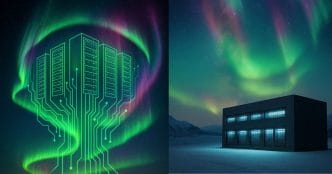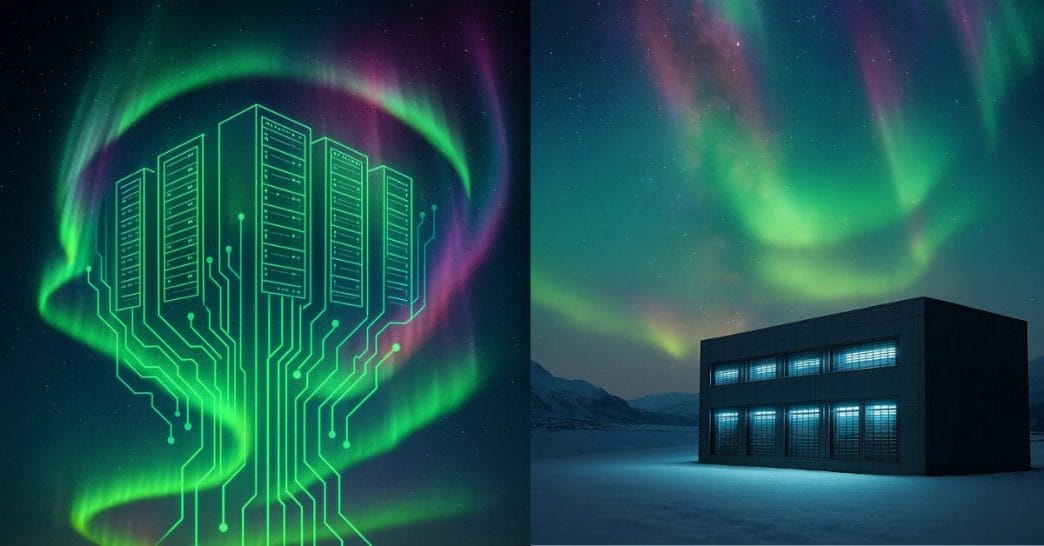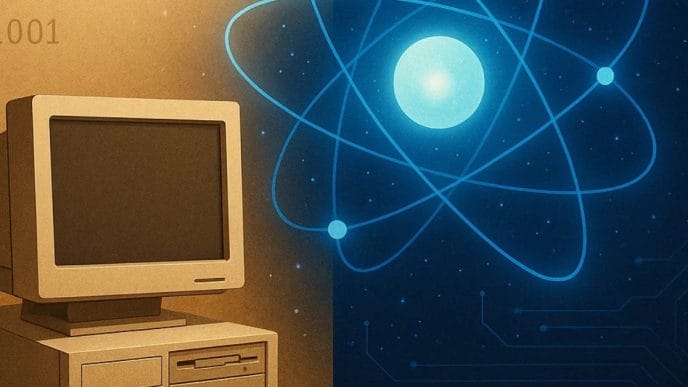For centuries, the Northern Lights—ethereal ribbons of green, purple, and red—have captivated human imagination with their celestial dance. But beyond their beauty lies a world of untapped technological potential. What if the auroras could be harnessed as a living data centre? Imagine the sky above the Arctic not just lighting up, but transmitting encrypted communications, powering remote sensors, and feeding energy grids.
This is the captivating premise behind the Aurora Hustle, a frontier where nature’s cosmic phenomena intersect with cutting-edge technology to pioneer energy harvesting, off-grid communication, and national security innovations.
Auroral Science: What Geomagnetic Storms Really Are and Why Tech Should Care
At the core of the aurora is a grand solar-terrestrial interplay. Powerful gusts of solar wind laden with charged particles slam into Earth’s magnetosphere, a protective magnetic bubble surrounding our planet. The result? These particles funnel down magnetic field lines toward the poles, colliding with gases in the upper atmosphere and setting off dazzling light displays. (NASA explains the aurora formation process)
But for technologists, these geomagnetic storms mean much more:
- Nature’s Electromagnetic Furnace. These storms generate intense electromagnetic fluctuations that can reach Earth’s surface as geomagnetically induced currents (GICs). While these currents can disrupt power grids and electrical infrastructure, as starkly demonstrated during the March 1989 Quebec blackout, they also reveal the immense electromagnetic energy cycling around our planet.
- Ionospheric Disturbances Affecting Communications. The aurora occurs within the ionosphere, a critical layer that reflects and modifies radio waves, impacting everything from long-range radio communication to Global Navigation Satellite Systems (GNSS). During storms, signal paths can bend unpredictably or fade altogether, challenging established networks (NOAA on space weather effects).
- A Data-Rich Environment. Scientific magnetometers, radars, and satellites continuously monitor geomagnetic conditions, creating a trail of geophysical data streams that fuel machine learning models for space weather prediction, essential for safeguarding satellites, aviation, and power infrastructures (ESA Space Weather Service Network).
Tech developers envision this tumultuous space weather as the origin of dynamic, ambient energy and communication resources lying in plain sight, nature’s own electromagnetic grid.
Power Potential: Harnessing the Aurora’s Energy for Tomorrow’s Grids
The idea of harvesting energy directly from geomagnetic storms is an intriguing concept, but it remains largely theoretical and exploratory. Researchers have proposed the concept of inductive energy capture where large conductive loops on the ground could, in theory, convert geomagnetically induced currents (GICs) into usable electrical power. However, it is important to clarify that no large-scale prototypes or peer-reviewed demonstrations have yet proven this idea feasible. Currently, GICs are primarily regarded as hazards that power utilities work to mitigate, rather than resources to be harvested. The concept remains an area of speculative research rather than an active technology under development.
Similarly, while auroral broadcast relays—communication signals bouncing off the ionosphere—are well-established, the aurora itself more commonly disrupts these signals during geomagnetic storms. Although some experimental research explores leveraging irregular ionospheric reflections caused by auroral activity, this method is not yet practical as a reliable or resilient communication technique. It remains primarily in the research and experimental stage.
Surveillance & Signal: Mining the Magnetosphere for Off-Grid, Encrypted Communications
The plasma turbulence and density fluctuations associated with auroras can complicate signal interception by scattering or distorting radio waves. However, describing this phenomenon as auroral encryption is a metaphorical or speculative analogy rather than a technical encryption method. Although natural plasma irregularities may create additional barriers to unauthorized signal interception, secure military communications still rely on conventional cryptographic techniques. The aurora’s effects alone do not provide actual encryption.
Auroral-enhanced communication pathways offer some resilience against jamming and cyber interference by relying on naturally dynamic phenomena rather than fixed infrastructure. This feature is important for defense forces operating in contested or remote theaters, although fully reliable aurora-based communications remain an active area of research rather than established technology.
Speculative but Real: Why Governments Quietly Invest in Space Weather Research
While there is significant investment in understanding and predicting space weather, there is currently no evidence that any government or entity possesses the ability to actively manipulate geomagnetic storms. The primary focus of space weather programs is to forecast geomagnetic activity to protect satellites, power grids, and communications infrastructure from potential damage. Speculation about future capabilities to influence or control space weather phenomena remains just that—speculative—and should be treated cautiously.
The strategic importance of space weather research lies in protecting and safeguarding critical infrastructure, gaining intelligence advantages through better communications, and anticipating the emerging space warfare domain where control of orbital assets and terrestrial consequences may intersect.
Actionable Insights for Tech Innovators
Tech innovators eager to capitalize on this cosmic opportunity should consider beginning with deeper partnerships. Collaborating closely with space weather research institutions such as NASA or ESA can open doors to early access to invaluable geomagnetic data streams that drive innovation in this emerging field. Moreover, investing resources into research and development focused on harvesting geomagnetically induced currents can pave the way for novel remote power applications, especially for off-grid and extreme environments where traditional energy infrastructure is scarce.
Keeping a keen eye on breakthroughs in ionospheric communication technologies is essential, as these advancements promise to transform secure messaging systems, especially under challenging conditions. When designing communication networks for military or Internet of Things (IoT) applications, integrating an understanding of auroral communication dynamics can enhance resilience against jamming and cyber interference, creating more robust, reliable channels.
Finally, staying informed about government space weather programs is more important than ever. These programs not only safeguard critical infrastructure but also represent potential gateways for collaboration and funding. Being proactive in following these developments positions innovators to seize emerging opportunities at the intersection of space weather science and technological application.
The Northern Lights are no longer just a celestial spectacle; they are the silent operators of an imminent tech revolution:
- Energy innovators are exploring, at a conceptual and research level, whether unpredictable geomagnetic power could one day supplement renewable sources.
- Communications experts leverage auroral plasma to build off-grid, encrypted, and resilient networks.
- Defense strategists invest heavily in understanding space weather to protect assets and gain intelligence advantages.
In the age of AI, quantum computing, and cyber warfare, the auroras embody nature’s raw computational and energetic processes in real time, offering a compelling roadmap for new tech frontiers.
As businesses and governments grapple with data sovereignty, energy scarcity, and the need for secure communications, the Northern Lights may emerge as the world’s first cosmic data centre—natural, encrypted, and fiercely powerful.
Who will harness this celestial hustle next? Pioneers of energy, encryption, or surveillance? The future of tech might just be written in the glow of the aurora.















